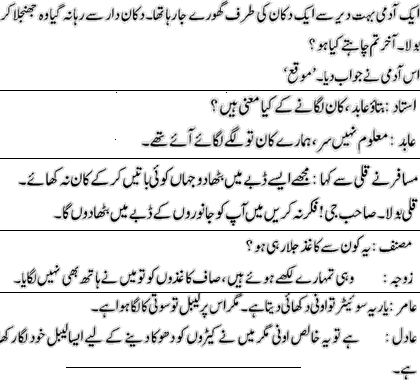| Sourcer:- Google.com.pk |
SMS could be implemented in every mobile station by updating its software. Hence, a large base of SMS capable terminals and networks existed when people began to use SMS. A new network element required was a specialized short message service center, and enhancements were required to the radio capacity and network transport infrastructure to accommodate growing SMS traffic.The technical development of SMS was a multinational collaboration supporting the framework of standards bodies. Through these organizations the technology was made freely available to the whole world.The first proposal which initiated the development of SMS was made by a contribution of Germany and France into the GSM group meeting in February 1985 in Oslo. This proposal was further elaborated in GSM subgroup WP1 Services (Chairman Martine Alvernhe, France Telecom) based on a contribution from Germany. There were also initial discussions in the subgroup WP3 network aspects chaired by Jan Audestad (Telenor). The result was approved by the main GSM group in a June '85 document which was distributed to industry.[14] The input documents on SMS had been prepared by Friedhelm Hillebrand (Deutsche Telekom) with contributions from Bernard Ghillebaert (France Télécom). The definition that Friedhelm Hillebrand and Bernard Ghillebaert brought into GSM called for the provision of a message transmission service of alphanumeric messages to mobile users "with acknowledgement capabilities". The last three words transformed SMS into something much more useful than the prevailing messaging paging that some in GSM might have had in mind.
SMS was considered in the main GSM group as a possible service for the new digital cellular system. In GSM document “Services and Facilities to be provided in the GSM System,” both mobile-originated and mobile-terminated short messages appear on the table of GSM teleservices.The discussions on the GSM services were concluded in the recommendation GSM 02.03 “TeleServices supported by a GSM PLMN.” Here a rudimentary description of the three services was given:Short message Mobile Terminated (SMS-MT)/ Point-to-Point: the ability of a network to transmit a Short Message to a mobile phone. The message can be sent by phone or by a software application.Short message Mobile Originated (SMS-MO)/ Point-to-Point: the ability of a network to transmit a Short Message sent by a mobile phone. The message can be sent to a phone or to a software application.Short message Cell Broadcast.The material elaborated in GSM and its WP1 subgroup was handed over in Spring 1987 to a new GSM body called IDEG (the Implementation of Data and Telematic Services Experts Group), which had its kickoff in May 1987 under the chairmanship of Friedhelm Hillebrand (German Telecom). The technical standard known today was largely created by IDEG (later WP4) as the two recommendations GSM 03.40 (the two point-to-point services merged) and GSM 03.41 (cell broadcast).WP4 created a Drafting Group Message Handling (DGMH), which was responsible for the specification of SMS. Finn Trosby of Telenor chaired the draft group through its first 3 years, in which the design of SMS was established. DGMH had five to eight participants, and Finn Trosby mentions as major contributors Kevin Holley, Eija Altonen, Didier Luizard and Alan Cox. The first action plan[17] mentions for the first time the Technical Specification 03.40 “Technical Realisation of the Short Message Service”. Responsible editor was Finn Trosby. The first and very rudimentary draft of the technical specification was completed in November 1987. However, drafts useful for the manufacturers followed at a later stage in the period. A comprehensive description of the work in this period is given in.The work on the draft specification continued in the following few years, where Kevin Holley of Cellnet (now Telefónica O2 UK) played a leading role. Besides the completion of the main specification GSM 03.40, the detailed protocol specifications on the system interfaces also needed to be completed.The Mobile Application Part (MAP) of the SS7 protocol included support for the transport of Short Messages through the Core Network from its inception.[20] MAP Phase 2 expanded support for SMS by introducing a separate operation code for Mobile Terminated Short Message transport. Since Phase 2, there have been no changes to the Short Message operation packages in MAP, although other operation packages have been enhanced to support CAMEL SMS control.From 3GPP Releases 99 and 4 onwards, CAMEL Phase 3 introduced the ability for the Intelligent Network (IN) to control aspects of the Mobile Originated Short Message Service, while CAMEL Phase 4, as part of 3GPP Release 5 and onwards, provides the IN with the ability to control the Mobile Terminated service. CAMEL allows the gsmSCP to block the submission (MO) or delivery (MT) of Short Messages, route messages to destinations other than that specified by the user, and perform real-time billing for the use of the service. Prior to standardized CAMEL control of the Short Message Service, IN control relied on switch vendor specific extensions to the Intelligent Network Application Part (INAP) of SS7.
Sms Adult Jokes Adult Jokes Sms Funny Hindi English Photos Images Wallpapers
Sms Adult Jokes Adult Jokes Sms Funny Hindi English Photos Images Wallpapers
Sms Adult Jokes Adult Jokes Sms Funny Hindi English Photos Images Wallpapers
Sms Adult Jokes Adult Jokes Sms Funny Hindi English Photos Images Wallpapers
Sms Adult Jokes Adult Jokes Sms Funny Hindi English Photos Images Wallpapers
Sms Adult Jokes Adult Jokes Sms Funny Hindi English Photos Images Wallpapers
Sms Adult Jokes Adult Jokes Sms Funny Hindi English Photos Images Wallpapers
Sms Adult Jokes Adult Jokes Sms Funny Hindi English Photos Images Wallpapers
Sms Adult Jokes Adult Jokes Sms Funny Hindi English Photos Images Wallpapers
Sms Adult Jokes Adult Jokes Sms Funny Hindi English Photos Images Wallpapers
Sms Adult Jokes Adult Jokes Sms Funny Hindi English Photos Images Wallpapers








No comments:
Post a Comment